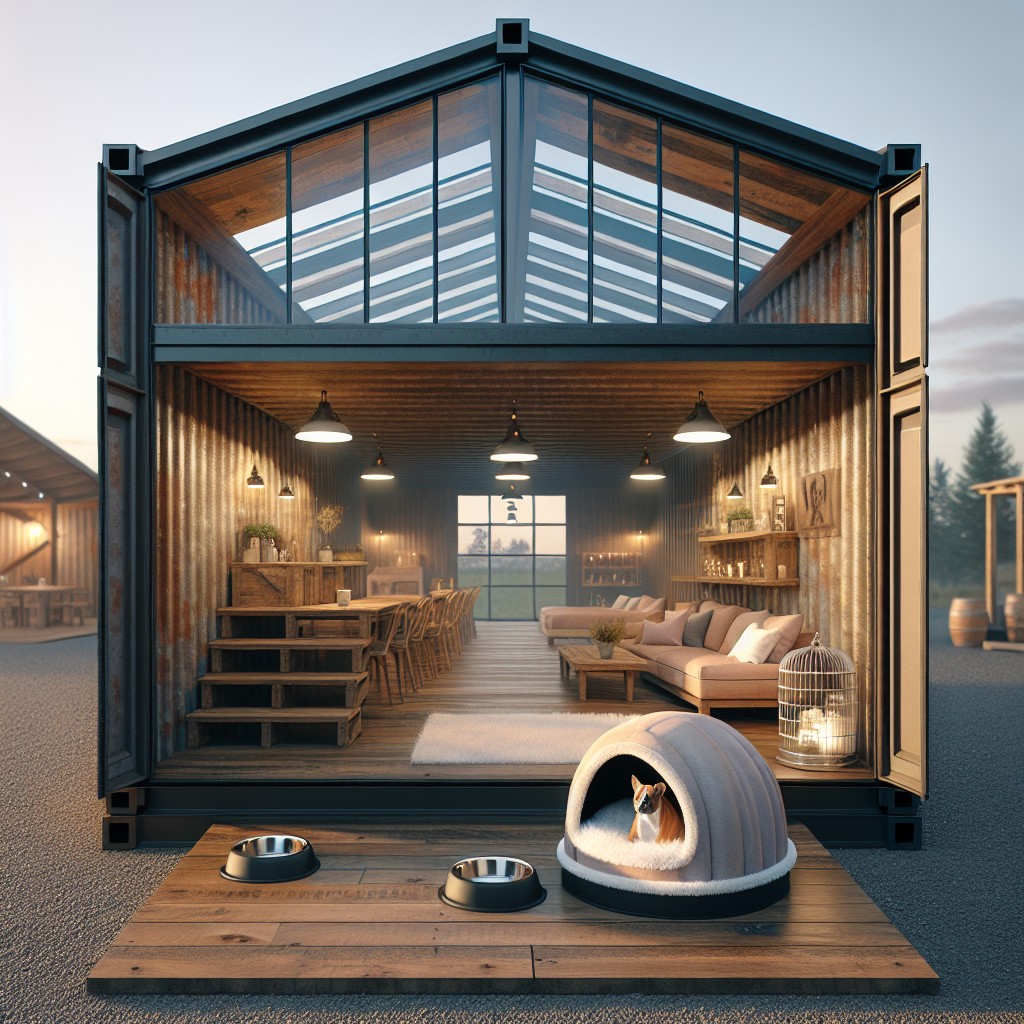Last updated on
Finetuning your recycling efforts becomes seemingly effortless with a trash and recycling bin combo – an innovative solution demystified in this article, comparing the top models and helping select the right one for your needs.
Key takeaways:
- Combination bins streamline waste disposal and reduce contamination in recycling streams.
- Placement, clear labeling, and matching bin sizes optimize efficiency.
- ADA compliance ensures accessibility for all individuals.
- The Hex-CenterPoint™ system offers modular design and smart technology.
- Material durability and sustainability are important considerations.
Benefits of a Trash and Recycling Bin Combo
Combination bins streamline waste disposal by offering a unified station for both trash and recyclables. These units foster responsible sorting at the source, which significantly reduces contamination in recycling streams.
Being paired, they save space in crowded environments like city streets, parks, or office landscapes where separate containers might be cumbersome. Moreover, having both options side-by-side encourages compliance; people are more likely to recycle when it is made convenient.
Lastly, combination bins can be more cost-effective, reducing the need for multiple collection points and simplifying the servicing process for waste management teams.
Best Practices for Using Combination Bins
Utilizing a trash and recycling bin combo efficiently can significantly streamline waste management and bolster recycling efforts. To maximize the effectiveness of these units, consider the following strategies:
1. Placement is Key: Locate the bin in a high-traffic area where it is easily accessible but doesn’t obstruct movement. This encourages use and ensures it won’t be overlooked.
2. Label Clearly: Use vivid, unmistakable labels to demarcate the recycling side from the trash side. Pictograms or images of acceptable items can quickly guide users and reduce contamination.
3. Match Bin Sizes to Needs: If the recyclables tend to pile up quicker than the trash, opt for a combo bin with a larger recycling compartment. This encourages users not to resort to the trash section when the recycling side fills up.
4. Regular Monitoring: Keep an eye on the bin to address any issues promptly, such as overflow or misuse, which can deter correct usage.
5. Educate and Inform: Supplement the bins with educational materials or nearby signage that informs about the environmental benefits of recycling and the impact of landfill waste.
6. Encourage Compliance: Make it as easy to recycle as it is to throw things away. If recycling requires extra effort, participation drops.
7. Streamline the Disposal Process: Use internal bins that are easy to remove and clean, facilitating efficient emptying and reducing downtime.
By integrating these practices, you not only ensure your combo bins are used correctly but also foster an environment where recycling becomes second nature.
Space Efficiency in Recycling and Trash Bin Combinations
Maximizing floor space, especially in areas where square footage is at a premium, is one of the primary advantages of opting for a combo unit over separate containers for recyclables and waste. These cleverly designed bins consolidate two necessary functions into one compact footprint, facilitating not only cleanliness but also traffic flow in busy environments like offices, malls, and airports.
Consider a high-traffic cafeteria setting – easy access to disposal options without the clutter of multiple bins can greatly streamline operations. By combining disposal streams into one bin, there’s less distance for users to travel, creating a more user-friendly space and improving the likelihood of proper waste segregation. Additionally, for those managing the properties, the combo bins mean only one stop is needed during collection rounds, increasing efficiency for janitorial staff.
Furthermore, with thoughtful design, these bins can offer equal capacity for trash and recyclables, despite their unified form. This parity reinforces the importance of recycling by providing it equal real estate to waste disposal, subtly encouraging users to consider their disposal habits.
A well-considered implementation of trash and recycling bin combos can lead to significant space savings and can make a statement about an organization’s commitment to sustainability – a win for both space management and the environment.
The Role of ADA Compliance in Recycling Bin Design
Ensuring accessibility is a pivotal aspect of public space design. This extends to combination recycling and trash bins, which must cater to all individuals, including those with disabilities. The Americans with Disabilities Act (ADA) outlines specific requirements that dictate the placement, clearance, and operation of these bins to guarantee they are user-friendly for everyone.
Height and Reach: The ADA mandates that the reaching height for any operable part of the bin, such as the lid or opening, should not exceed 48 inches. This ensures that individuals in wheelchairs can comfortably dispose of waste without assistance.
Clear Floor Space: Adjacent to the bin, there must be a clear floor space of at least 30 inches by 48 inches to accommodate the maneuvering of a wheelchair. This space must be on an accessible route and have a stable, firm, and slip-resistant surface.
Operable Parts: The design must include operable parts that are easy to use with one hand without requiring tight grasping, pinching, or twisting of the wrist. The force required to operate these parts should not exceed 5 pounds, making it simpler for those with limited strength or hand coordination.
Labels and Signage: Besides the physical design, the ADA also emphasizes the importance of tactile labels and signage with braille to assist visually impaired users. Strategic placement of these signs is necessary for easy identification of the trash and recycling compartments.
Integrating these ADA compliance features not only broadens inclusivity but also promotes a universal design that enhances the user experience for all individuals, regardless of ability. This approach ensures that recycling and trash disposal practices are more equitable and accessible, fostering a more inclusive environment.
Innovations in Combination Recycling Containers: The Hex-CenterPoint™ System
The Hex-CenterPoint™ system revolutionizes the integration of trash and recycling disposal with its unique design. Its modular approach allows for easy customization according to the needs of any environment.
Here’s how it stands out:
- A central hub forms the core of the system enabling multiple waste streams to converge at a single point for efficient sorting.
- Hexagonal containers fit snugly around the hub like pieces of a puzzle, reducing the footprint compared to linear configurations.
- Each bin has clear, interchangeable labels, simplifying the transition between different types of waste management requirements.
- Designed with user convenience in mind, the system features easy access openings and ergonomic disposal heights.
- The Hex-CenterPoint™ employs smart technology to monitor waste levels, providing data to optimize collection schedules and reduce overflow.
By providing a flexible and technologically advanced solution, the Hex-CenterPoint™ system addresses the dynamic needs of waste management in the 21st century.
Material Durability and Sustainability in Combo Recycling Bins
When considering a combo recycling and trash bin, it’s essential to evaluate the materials used in their construction. Durability ensures that the bins will withstand wear and tear over time, reducing the need for frequent replacements and thereby minimizing waste.
High-density polyethylene (HDPE) is commonly used due to its resistance to harsh weather conditions and its longevity, guaranteeing that the units remain functional and visually appealing for years.
Stainless steel is another robust option, favored for its strength and ease of cleaning.
Some manufacturers opt for recycled materials in the production of these bins, enhancing the sustainability factor of the product. This not only supports the recycling market but also reduces the environmental footprint.
Look for bins with UV-resistant coatings to maintain their appearance despite prolonged exposure to sunlight.
Materials chosen for combo bins not only impact their lifespan but also their end-of-life recyclability. Selecting materials that can be easily recycled at the end of the bin’s life cycle closes the loop, contributing to a circular economy.
Selecting the Right Combo Bin: Capacity and Usage Considerations
Choosing a combo bin that meets your needs involves considering both the volume of waste and recyclables you anticipate and the specific habits of your area’s users. Typically, public spaces with high foot traffic will require larger bins to accommodate more waste, whereas a smaller office may manage with a more compact unit. It’s essential to determine the ratio of recycling to trash compartments; areas with a higher commitment to recycling may benefit from a bin with equal or greater capacity for recyclables. Remember, too, that certain materials, like cardboard, require more space than denser waste.
For spaces that serve food or generate a significant amount of organic waste, selecting a combo bin with a dedicated section for compostables can greatly reduce landfill contributions. When considering the usage, reflect on the user experience—it should be intuitive. The openings must be designed to guide appropriate disposal, thereby minimizing contamination and encouraging proper use.
Lastly, be mindful of the cleaning and collection schedules as they will dictate the necessary frequency of maintenance. More frequent usage would suggest a larger bin to avoid overflow between collections, while less frequented areas can manage with smaller bins, provided that they are not too small to discourage use. The goal is to find that sweet spot where capacity meets practicality, driving effective waste and recycling habits.
Incorporating Combo Bins Into Public Spaces and Streetscapes
Integrating trash and recycling bin combos into public spaces necessitates thoughtful placement to encourage use and maintain the area’s aesthetic. Here are a few key points to consider:
- Visual Harmony: Choose bin designs that complement the existing architecture and landscape elements. A cohesive look contributes to a more orderly and inviting public space.
- Accessibility: Position bins in high-traffic areas where waste is likely to be generated, such as near food courts, benches, and walkways. However, ensure they don’t obstruct pedestrian flow.
- Visibility: Recycling bins paired with trash receptacles should be equally visible to prompt users to make mindful disposal choices.
- Weather Resistance: In outdoor environments, opt for combo bins that can withstand varying weather conditions without compromising functionality or appearance.
- Vandalism Prevention: Consider bins made of robust materials with tamper-resistant features to deter vandalism in less supervised spaces.
- Customization: Leverage the opportunity for public education through customized signage on bins, clarifying which materials go in each section, and reinforcing community recycling goals.
By giving attention to these aspects, public spaces can foster a culture of responsible waste disposal and promote environmental stewardship among citizens.
Educational Impact of Clear Signage On Recycling Behaviors
Clear signage on trash and recycling bin combos goes beyond mere labels; it’s a silent educator in the public domain. Eye-catching symbols paired with concise instructions empower individuals to make more environmentally conscious choices.
When the signs depict which materials are recyclable, confusion diminishes and compliance rises. High-contrast colors and universally recognized graphics ensure that the message transcends language barriers, catering to a diverse populace.
Interactive features like QR codes can elevate the educational aspect, directing users to informative websites for further learning on recycling practices. The presence of well-marked bins also subtly encourages a culture of recycling by constantly reminding users of the correct disposal methods.
This continual exposure plays a crucial role in shaping long-term behavior and fostering a community dedicated to sustainable waste management.
Maintenance and Upkeep of Combo Recycling and Trash Bins
Regular cleaning is vital to prevent the buildup of residues that can lead to foul odors and attract pests. Wipe down the exterior and interior surfaces with a robust, eco-friendly cleaner. Accessible, removable liners simplify the task and increase the preservation of the combo bin’s structure.
Scheduled inspections help identify any wear, tear, or damage early, such as a hinge malfunction or a crack, ensuring that the combo bins remain functional and safe for users. Swiftly addressing such issues prevents larger, more costly repairs down the line.
Mindful placement enhances longevity; keep combo bins away from extreme temperatures and direct sunlight when possible to avoid material degradation.
Leverage color-coded liners and lids for easy sorting, which aids in preventing cross-contamination between trash and recyclables. This practice also guides users in correct usage, thereby reducing sorting errors.
Lastly, ensure that combo bins are clearly labeled with accepted items for recycling. This not only encourages proper use but also minimizes the risk of contamination, reducing the time and resources spent on sorting post-collection.
Related reading:
Table of Contents



